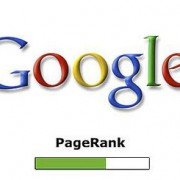Website Code Optimisation for Better Rankings
In the fast-paced world of SEO marketing, maintaining a competitive edge is essential. You’ve invested time and effort into designing a visually appealing website, developing engaging content, and securing valuable inbound links. Your site once ranked high for its primary key phrases within SERPS, outperforming your rivals. However, suddenly you notice a decline in your search engine position. While your competitors have made only minor adjustments, your site is slipping. What could have gone wrong?
Old Technology: Depreciated Code
In search engine optimisation (SEO), one factor often flies under the radar: the underlying code of your website. The coding framework you employ can significantly impact your site’s overall performance. Neglecting the importance of maintaining up-to-date code can prove detrimental.
As recently as February 2005, we faced a similar challenge. While our site boasted contemporary content, we witnessed a slight dip in our rankings. Driven by our commitment to adhere to W3C standards and make our platform more accessible, we embarked on a dual strategy: a comprehensive website redesign scheduled for March 2006 and an immediate re-coding of our existing site.
The Code Dilemma
Several factors spurred our decision to re-code. We recognised that our content was as current if not more than that of our competitors. Yet, for inexplicable reasons, our rankings had slipped. It appeared we had either triggered a filter or fallen victim to the ever-evolving algorithms of search engines.
Accessibility was another motive for re-coding our website. Prioritising an accessible website isn’t just good practice; it’s sound business ethics. Failing to cater to users with accessibility needs excludes a significant portion of the market.
Transitioning to Cross-Browser Compatibility
Our coding overhaul involved transitioning the entire website to XHTML and replacing tables with div elements while maintaining an SEO-friendly architecture. This restructured the content flow and facilitated smoother navigation for search engine ‘bots’. Notably, this shift ensured cross-browser compatibility, supporting browsers like Internet Explorer, Opera, Firefox (the upcoming version 2), and Safari, as well as enhancing usability for screen readers. Interestingly, our efforts seemed to correlate with an uptick in the search engine rankings of well-coded content sites.
Mobile Opportunities Through Code Optimisation
Our commitment to coding standards yielded unexpected benefits. Beyond desktop browsing, our site now seamlessly adapts to mobile platforms, including smartphones. This aligns with Google’s announcement of indexing sites for its mobile search engine. Sites adhering to XHTML compliance and eliminating tables stand a better chance of securing higher rankings and catering to the expanding mobile audience.
Next Generation SEO
As search engines evolve, adapting your approach to SEO becomes paramount. The shift in our search rankings and technical curiosity led us to explore mobile web optimisation, now an integral part of our service portfolio. Just as technology progresses, coding evolves, rendering one code obsolete over time due to content updates, search engine algorithm shifts, and ongoing optimisation efforts.
A holistic SEO strategy extends beyond link building and content creation. It involves meticulous content reevaluation, code refinement, image optimisation, and meta-data enhancement. Validating and updating your code not only gives you an upper hand over competitors but also scales and future-proofs your website.
Final thoughts on re-coding for SEO purposes
In the world of technical SEO marketing, neglecting the significance of coding in your SEO strategy is a costly oversight. Staying at the forefront necessitates periodic scrutiny of your website’s code, making necessary adjustments to align with evolving standards. Beyond short-term gains, this proactive approach streamlines future optimisation efforts and is another tool in your box to help you maintain competitive search rankings.








